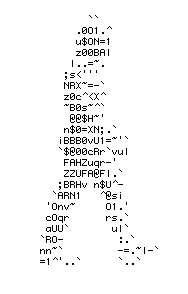Internet: A global network of interconnected computer devices. The Internet is the hardware infrastructure that supports the Web.
World Wide Web (WWW): A global network of interconnected software applications. The Web is the interface for accessing information on the Internet.
Website: A Web application for displaying text, images, video, and other media files. Websites can be used for business, news, education, or hobby.
Web Browser: A computer application for accessing the Web and viewing Websites. Common web browsers are Firefox, Chrome, IE, Safari, and Opera.
Uniform Resource Locator (URL): The technical term for a website address that is the id of a particular website page. The URL typically starts with http://
Domain Name: The readable name of a website address, which is controlled by a numeric IP address.
IP Address: A unique number assigned to a website or computer device for network identification.
Domain Name System: Translates numerical IP Addresses into custom readable domain names.
Web Server: A dedicated computer device for hosting and generating websites on the Web and Internet.
Web Hosting: Hard drive space on a Web Server that stores website files. Hosting may include other features such as databases, email, etc.
Bandwidth: The measure for speed you can send data through an Internet connection. Higher bandwidth enables faster connection speed.
Database: An application on a computer or network that stores information in tables with columns and rows.
Search Engine: An online database that stores and organizes information on the Web. Users enter keywords to search for information.
Optimization: A process of making something as fully functional or effective as possible.
Search Engine Optimization (SEO): A process of improving the visibility of a website on the Web. If a website is optimized with keywords that users are looking for, it will appear higher in the results of a search engine query.
White Hat SEO: SEO techniques that follow search engine guidelines.
Black Hat SEO: SEO techniques that go against search engine guidelines.
Robot/Spider/Crawler: An automated program that searches the Web for collecting, processing, and indexing information.
robots.txt File: An admin file in the root directory of a website that allows developers to manage actions of search engines such as blocking access to website pages or files.
.htaccess File: A hidden admin file in a website directory of Apache servers that allows developers to create rules and special functions such as page redirect.
Meta Tags: Lines of code in the head section of HTML pages that help search engines index each webpage properly relative to its content.
Bounce Rate: The percentage of website visitors who only view one page then leave the website.
Usability: The ease at which users are able to understand and navigate the pages of a website.
Responsiveness: The ability of a website interface to adapt to different devices such as computers, laptops, tablets, and mobile.
Copywriting: Writing original and unique text content for websites or other media applications.
Blog (Web Log): An online journal in website format for archiving and categorizing information.
Content Management System (CMS): A software program that provides a framework for building websites with custom design and development options.
Social Network: An online community website where users create profiles and network for business, education, or entertainment.
